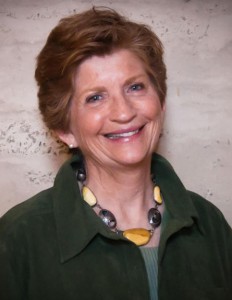 Okay, I use the word “girl” loosely. I mean anyone of the female gender between 21 and 65. Or older …
Okay, I use the word “girl” loosely. I mean anyone of the female gender between 21 and 65. Or older …
And I’m not talking mascara. Or Tampax®. Or Spanx®. Or a Cinnamon Dolce Latte.
I’m talking about the real foundations of life. Not the things that make your daytime sweet. Instead, the financial ones that let you sleep soundly at night. I’m talking about the five pillars of a solid financial future. And it’s never too early—or too late—to start.
I can already hear some of you screaming. “How am I supposed to do that when I’m up to my ears in debt?” “I’m trying to keep my house out of foreclosure and you want me to do WHAT???”
But I’m ignoring you. You need these things, no matter what your circumstances. No matter what your age. No matter what your philosophy of life.
Pillar #1: A detailed budget. I know, it sounds deadly. And most people avoid preparing one like the plague. Maybe if you call it a “spending plan?” Whatever it takes to draw up a budget, or plan, nothing gives you a greater feeling of control than having the inflow and outflow of your money organized and monitored.
And nothing makes it more possible for you to spot the “bleeders,” the little expenses that add up and that you’re not even aware of. First control the bleeders. Then take an ax, and later a scalpel, to your spending. Do whatever you can to get your monthly spending lower than your monthly income.
The result will be the end of the devastating head chatter that has kept you up nights … and unfocused days … for as far back as you can remember.
Pillar #2: A ‘get-out-of-debt’ plan. There’s debt and there’s debt. “Good debt” is when you use other people’s money to make an investment in something with a positive return on investment (ROI). That could be in your education or some asset (such as a house … although that’s no longer the guaranteed deal it was).
“Bad debt” is when it’s used to finance “consumables,” including cars, vacations, clothes, meals, etc. … that will be worth less (or be gone) tomorrow. (And good vacation memories don’t count!)
To strengthen this foundational pillar, the first thing to do is to “ice” your credit cards by taking them out of circulation. Or you could get the kind you have to pay off each month. That will leave you the flexibility you need for business travel, justifiable expenditures, and so forth.
Just remember that when you retire a credit card, that means taking it out of your wallet and putting it in a drawer. Don’t cancel it or your credit score will be affected negatively.
Next, analyze the debt that’s outstanding and prioritize which card you want to pay off first, while making minimum payments on the rest. Two schools of thought exist: (1) pay off the ones with the highest interest rate first, and work down; or (2) simplify your finances by paying off the little ones so you have fewer and fewer statements coming in the mail each month. Psychologically, the second one is strongest although it doesn’t make as much financial sense.
Choose one, whichever you prefer, and follow that strategy as you fight to get yourself out of the clutches of “bad debt.” To be able to say—with pride—that you’re debt-free will totally change how you look at yourself and your future. I can’t explain exactly how that works but, trust me, it’s magical.
Pillar #3: A retirement account. It’s important to know you are taking care of yourself for the long haul, and that you do not intend to condemn yourself to surviving on Social Security alone in your later years. Remember that anything you set aside to complement your Social Security payments will distance you from that survival existence. Start small, if need be, but start.
Whatever you can put aside, even if it’s just the minimum allowed by the institution holding it, do it! And if you can contribute the annual maximum, hurray! Just being able to talk about having an IRA or a 401(k) will give your self esteem a boost!
Whether you’re an employee or self-employed, there are defined contribution plans where you set aside some earnings, before taxes are paid, and avoid having to pay the taxes until you withdraw the money. By then, your tax bracket is likely to be much lower. Or you might prefer to contribute after-tax dollars, in a Roth IRA. I’ll leave the alphabet soup of 401(k) or SEP (Simplified Employee Pension Plan) or IRA (Individual Retirement Account), etc., to your accountant or human resources professional to explain.
Now, if in this volatile market you don’t trust putting your money in traditional market vehicles, like funds, know that you can buy gold to hold in an IRA. (That’s important if you’re one of the people who think the sky’s about to fall in.)
The key to these accounts is compounding interest. It is so powerful, regardless of how much time you have left to let it work. Of course, the more time, the better. But every contribution counts. And if your company matches funds, it’s a no-brainer, because that’s free money they’re contributing to your retirement. It gets set aside, and just grows, as long as you don’t tap into it.
Your retirement accounts are not emergency funds. They are sacrosanct. Just think of taking money out of retirement accounts like taking food out of an old lady’s mouth. Because that’s what it is. And that old lady is you.
[In 2001, as my world was coming down around my ears, I emptied out my IRAs. Yet all that did was prolong the inevitable. Oh, what I’d do to have that money today, compounded over ten more years. Today I understand that what I did was borderline criminal!]
Pillar #4: An emergency fund. You need money that is readily available so you’re not caught off guard by one of life’s inescapable surprises. A blown car engine. A broken arm. A dying friend or relative. A lost job.
LearnVest.com, a personal finance site, says you need 9 times your monthly “nut” because of the slow economy, particularly if the emergency is that you lost your job. Suze Orman says 6+ months. I say it should be however much you can save. But just knowing it’s there will help you sleep more soundly at night.
Start with whatever you can. Ten dollars a week. Fifty dollars a month. Consider online savings accounts, where fees are lowest and interest rates are more generous than offline … although they’re still pretty anemic.
Putting money aside, regardless of the amount, somehow leads you to save more. There is an element of taking care of yourself, or of those you love. It’s powerful. It’s magnetic. You might even find yourself revisiting your budget (oops, spending plan) to see where you can squeeze out a little more to set aside. If feels that good!
Pillar #5: A vision. If you don’t know where you’re going, you have no motivation to do what’s necessary to get there. But if you’ll invest the time and energy in figuring out what’s important to you, what piques your fancy, what you’re passionate about … and write it down … you’ll be amazed how much easier it is to make little sacrifices elsewhere that start you working on the other four pillars.
In summary, I know how much financial distress people are facing. I also know how people protect some spending habits they think they can’t live without. But those are just habits.
Yet when you free up that money and put it in one of the first four pillars—and create the vision of what makes life worthwhile—you’ll witness a multiplier effect of every dollar you save.
Give it a try for a few months, and let me know if I’m wrong. I don’t believe I am.
xxxxxxxxxx
| Would you like to use this article on your blog, ezine, or newsletter? You have my permission to share it in its entirety with the following blurb: |
|---|
| Sharon O’Day is a money expert with a successful career in global finance and marketing, plus an MBA from the Wharton School. Today she specializes in helping entrepreneurial women over 50 remove the obstacles to making and saving money, and to becoming financially free. For more information on how to be “Over Fifty and Financially Free,” visit http://SharonODay.com |
xxxxxxxxxx
 Bio: Sharon O’Day lost everything at age 53: her home, her business, everything. But how could that be? She’s an expert in global finance and marketing with an MBA from the Wharton School. She has worked with governments, corporations, and individuals … yes, she was the secret ‘weapon,’ if you will, behind many individuals in high places. But yet she did! Since then, Sharon has interviewed countless women and done extensive research to understand how that could have happened, especially with her strong knowledge of numbers and finance.
Bio: Sharon O’Day lost everything at age 53: her home, her business, everything. But how could that be? She’s an expert in global finance and marketing with an MBA from the Wharton School. She has worked with governments, corporations, and individuals … yes, she was the secret ‘weapon,’ if you will, behind many individuals in high places. But yet she did! Since then, Sharon has interviewed countless women and done extensive research to understand how that could have happened, especially with her strong knowledge of numbers and finance.
Today her mission is to show as many women as possible how to become financially free for the long term, through her “Over Fifty and Financially Free” coaching sessions. She has developed a step-by-step plan to get past all the obstacles that keep women broke and scared … and from reaching the financial peace of mind they so deserve.





